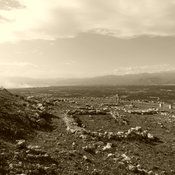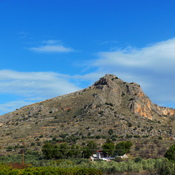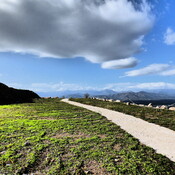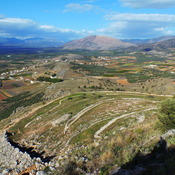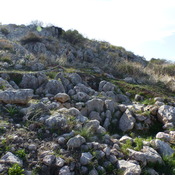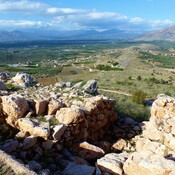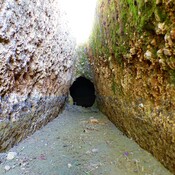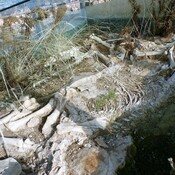Es gibt noch keine deutschsprachige Anmerkungen. Präsentiert wirden Anmerkungen auf English.
The Achaeans built their fortress here in the 14th - 13th centuries BC. The citadel of Tiryns located in Argolis, near Mycenae already important by the Middle Helladic period, controlled the trade routes between the mainland and the Aegean. Tiryns was conquered by the Dorians around 1100 BC. Around 470 BC the citadel was destroyed by Argives. Pausanias in his Description of Greece described the walls of the citadel as a work of the Cyclopes made of unwrought stones1.
See:
- Pausanias Description of Greece II.25.8
- Heinrich Schliemann: Tiryns: Der Prähistorische Palast der Könige von Tiryns; Ergebnisse der neuesten Ausgrabungen F.A. Brockhaus, Leipzig 1886
- Joseph Maran: Tiryns. In: Eric H. Cline (eds.): The Oxford Handbook of the Bronze Age Aegean (ca 3000–1000 BC). Oxford University Press, 2010, pp. 722–734.
- Joseph Maran, Alkestis Papadimitriou: Gegen den Strom der Geschichte. Die nördliche Unterstadt von Tiryns: ein gescheitertes Urbanisierungsprojekt der mykenischen Nachpalastzeit. AA, 2. Halbband, 2016, pp. 19–118.- on line https://www.academia.edu/36854026
- Eberhard Zangger: Landscape Changes around Tiryns during the Bronze Age. AJA 98, 1994, S. 189–212, besonders S. 194–196. - online https://www.academia.edu/23835287/
- Kyle A. Jazwa, The Construction of Early Helladic II Ceramic Roofing Tiles from Mitrou, Greece: Influence and Interaction, Mediterranean Archaeology and Archaeometry, Vol. 18, No 2, (2018), pp. 153-173, https://mitrou.utk.edu/wp-content/uploads/2018/09/2018-Jazwa-EH-II-MitrouTiles.pdfKyle A. Jazwa, The Construction of Early Helladic II Ceramic Roofing Tiles from Mitrou, Greece: Influence and Interaction, Mediterranean Archaeology and Archaeometry, Vol. 18, No 2, (2018), pp. 153-173, https://mitrou.utk.edu/wp-content/uploads/2018/09/2018-Jazwa-EH-II-MitrouTiles.pdf
Referenzen
- ↑The wall, which is the only part of the ruins still remaining, is a work of the Cyclopes made of unwrought stones, each stone being so big that a pair of mules could not move the smallest from its place to the slightest degree. Long ago small stones were so inserted that each of them binds the large blocks firmly together.
The Achaeans built their fortress here in the 14th - 13th centuries BC. The citadel of Tiryns located in Argolis, near Mycenae already important by the Middle Helladic period, controlled the trade routes between the mainland and the Aegean. Tiryns was conquered by the Dorians around 1100 BC. Around 470 BC the citadel was destroyed by Argives. Pausanias in his Description of Greece described the walls of the citadel as a work of the Cyclopes made of unwrought stones1.
See:
- Pausanias Description of Greece II.25.8
- Heinrich Schliemann: Tiryns: Der Prähistorische Palast der Könige von Tiryns; Ergebnisse der neuesten Ausgrabungen F.A. Brockhaus, Leipzig 1886
- Joseph Maran: Tiryns. In: Eric H. Cline (eds.): The Oxford Handbook of the Bronze Age Aegean (ca 3000–1000 BC). Oxford University Press, 2010, pp. 722–734.
- Joseph Maran, Alkestis Papadimitriou: Gegen den Strom der Geschichte. Die nördliche Unterstadt von Tiryns: ein gescheitertes Urbanisierungsprojekt der mykenischen Nachpalastzeit. AA, 2. Halbband, 2016, pp. 19–118.- on line https://www.academia.edu/36854026
- Eberhard Zangger: Landscape Changes around Tiryns during the Bronze Age. AJA 98, 1994, S. 189–212, besonders S. 194–196. - online https://www.academia.edu/23835287/
- Kyle A. Jazwa, The Construction of Early Helladic II Ceramic Roofing Tiles from Mitrou, Greece: Influence and Interaction, Mediterranean Archaeology and Archaeometry, Vol. 18, No 2, (2018), pp. 153-173, https://mitrou.utk.edu/wp-content/uploads/2018/09/2018-Jazwa-EH-II-MitrouTiles.pdfKyle A. Jazwa, The Construction of Early Helladic II Ceramic Roofing Tiles from Mitrou, Greece: Influence and Interaction, Mediterranean Archaeology and Archaeometry, Vol. 18, No 2, (2018), pp. 153-173, https://mitrou.utk.edu/wp-content/uploads/2018/09/2018-Jazwa-EH-II-MitrouTiles.pdf
Referenzen
- ↑The wall, which is the only part of the ruins still remaining, is a work of the Cyclopes made of unwrought stones, each stone being so big that a pair of mules could not move the smallest from its place to the slightest degree. Long ago small stones were so inserted that each of them binds the large blocks firmly together.








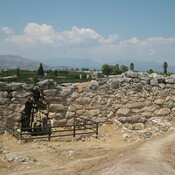
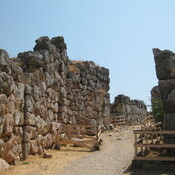
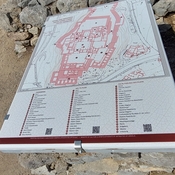
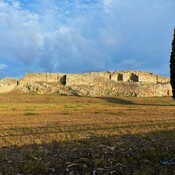
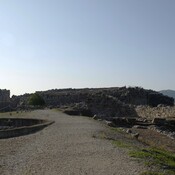
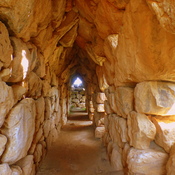
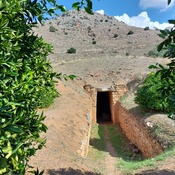
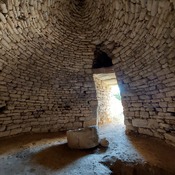
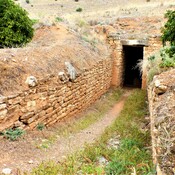

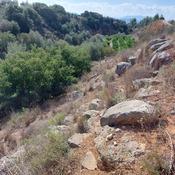
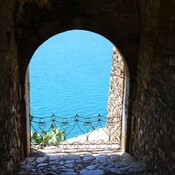
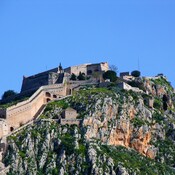
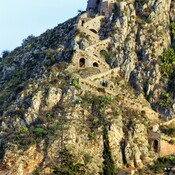
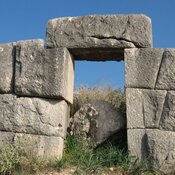
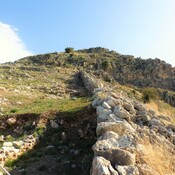
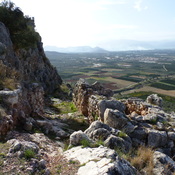
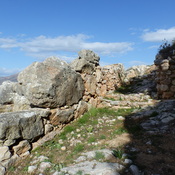
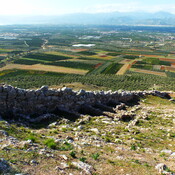
![Midea, postern [syrinx] gate](https://images.vici.org/crop/w175xh175/uploads/p1340771.jpg)
